comparison of experimental data between the intervention group and the control group,found thatafter two groups of contrast experiments,the intervention group of patients with smoking status;high density lipoprotein (mmol/L),low density lipoprotein (mmolL)and triglyceride(mmol/L);systolic blood pressure;diastolic blood pressure and other medical condition and testing index thetest compared with the control group significantly decreased,and the patients smoking lessnumber of physical activities in general more than half,compared with the control group,theintervention group after treatment,reduce recurrence rate,aspirin,beta adrenergic blocker andangiotensin inhibitors are currently used in less two sets of experiments data with difference valuep<0.05 statistical data requirements.Conclusion:evidence-based nursing model design andimplementation is conducive to promoting the rehabilitation of patients with acute myocardialinfarction were integrated on myocardial infarction patients from the emergency admission-discharge-,monitoring,management and follow-up process,may reduce the occurrence of therisk factors,so as to effectively reduce recurrence,improve the quality of life of patients,reducemedical costs,with a good social and economic benefits.Key words:acute myocardial infarction;two stage prevention nursing;nursing mode;comparative experimental significance急性心肌梗死作为冠心病的一种急性表现,严重危机患者生命。近年来急性心肌梗死其发病率和疾病负担却呈现出上升趋势。二级预防措施能够有效降低复发和医疗负担,提高患者生命质量。目前急性心肌梗死患者二级预防的实施状况较差,远远达不到要求。因此如何提高患者二级预防的实施效果亟待解决。基于此,本课题拟应用多层次证据融合理论,在对急性心肌梗死的文献证据与通过获取的定性证据信息进行整合的基础上,构建针对心肌梗死患者的综合化循证护理模式,并通过比较不同干预模式的效果,最终为确定该模式下的慢性病二级预防护理干预模式构建的可行性提供决策依据。研究结果的实现,有利于提高急性心肌梗死患者二级预防的接受度和依从性,从而提高降低复发,改善患者预后。
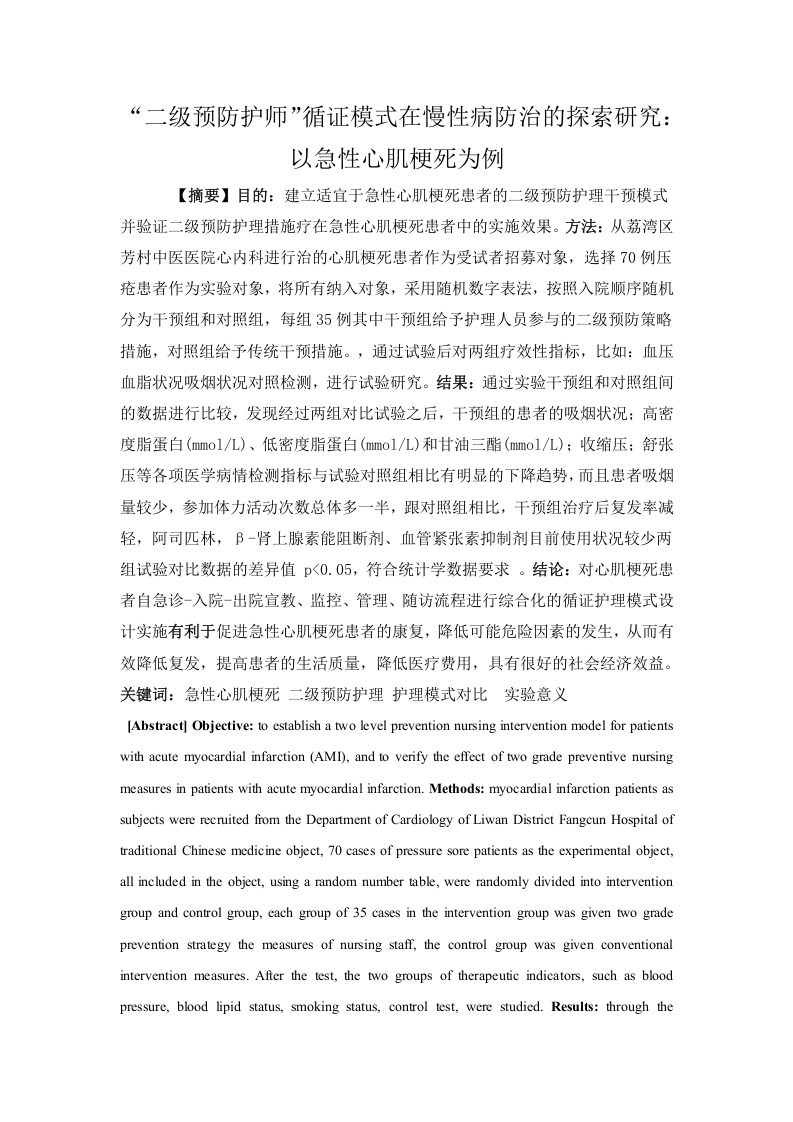
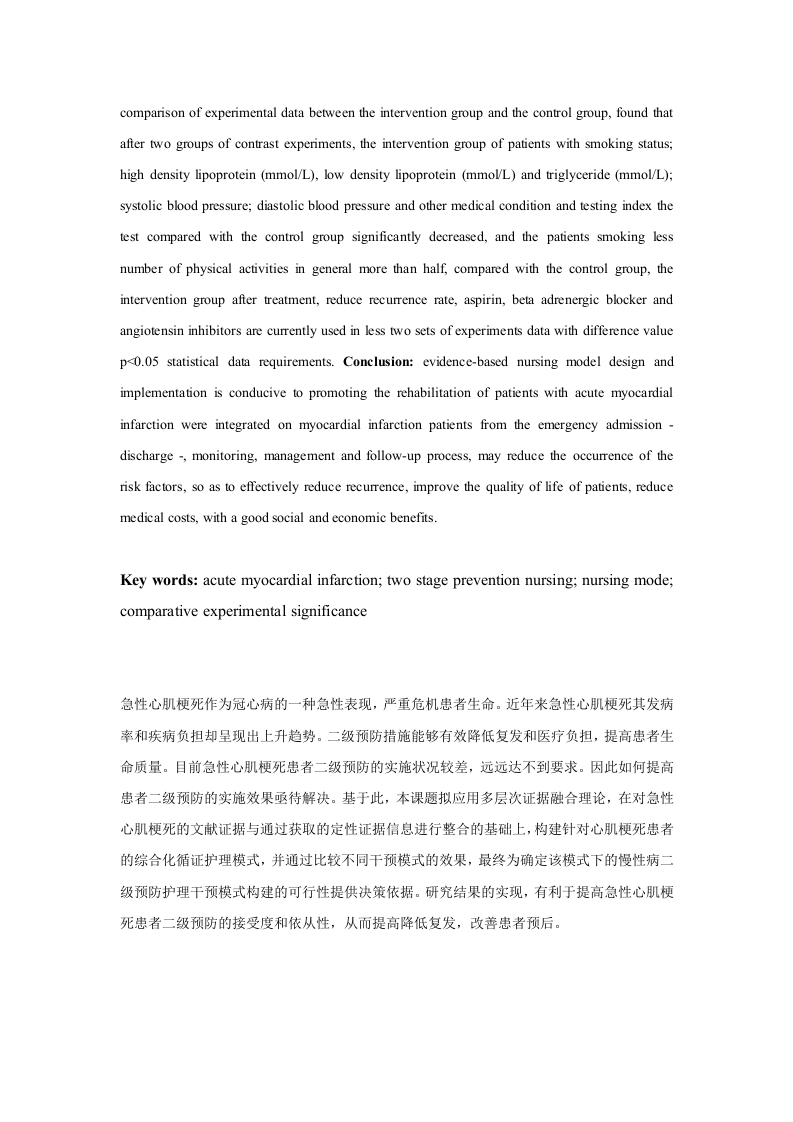
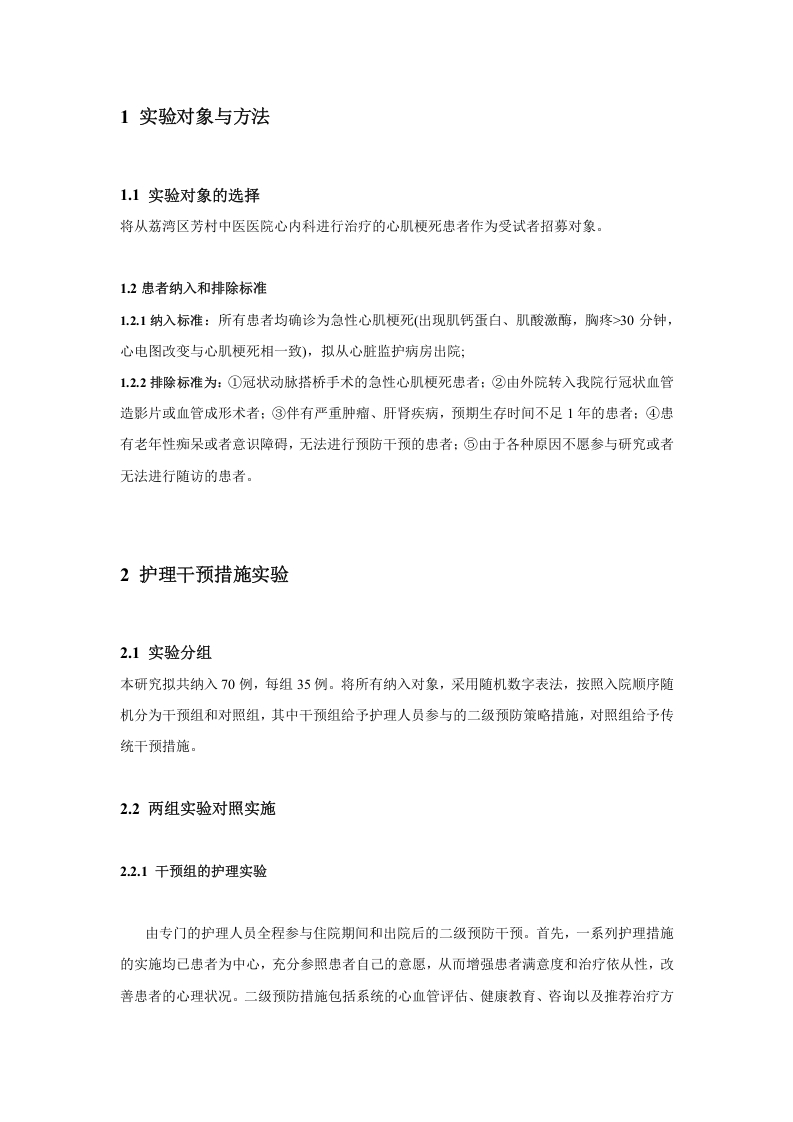
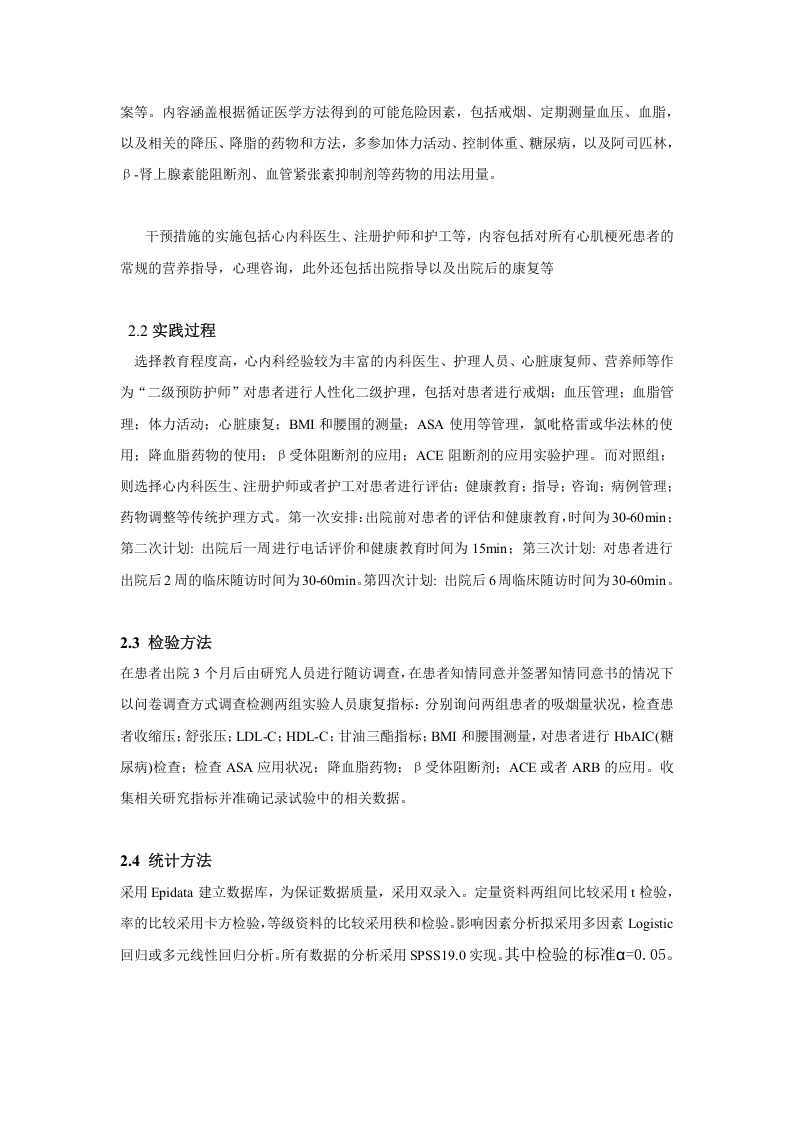
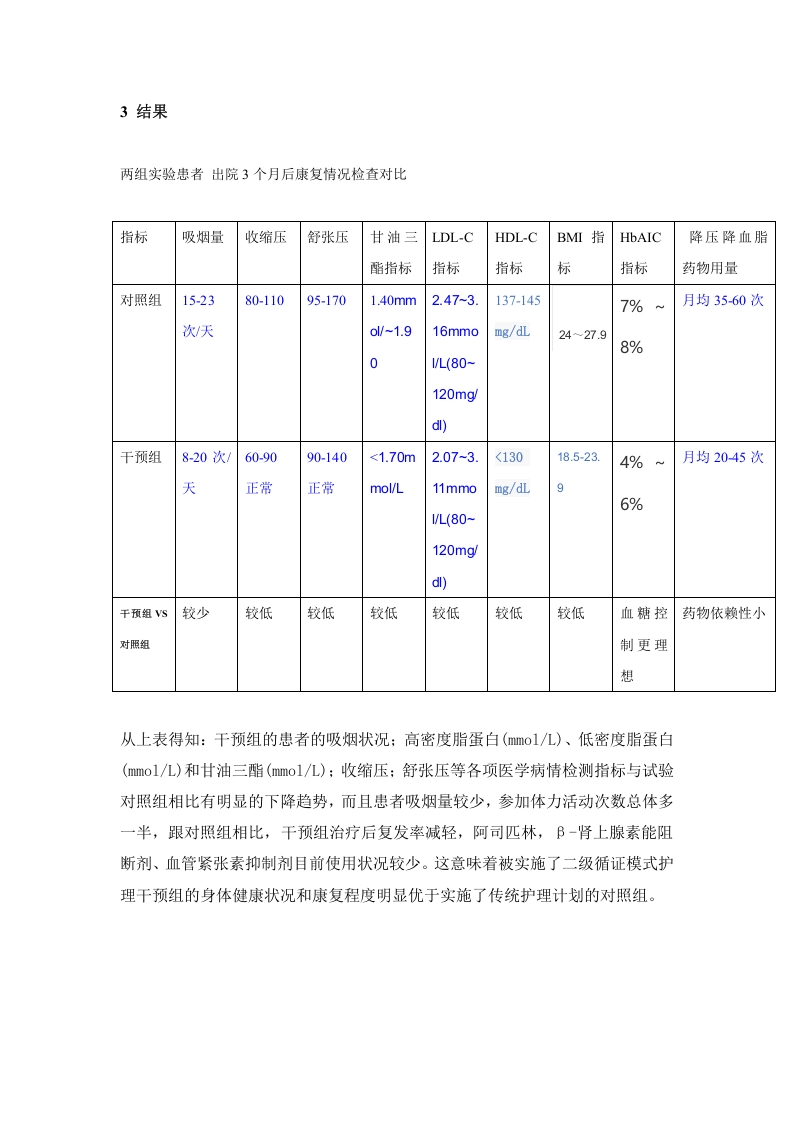
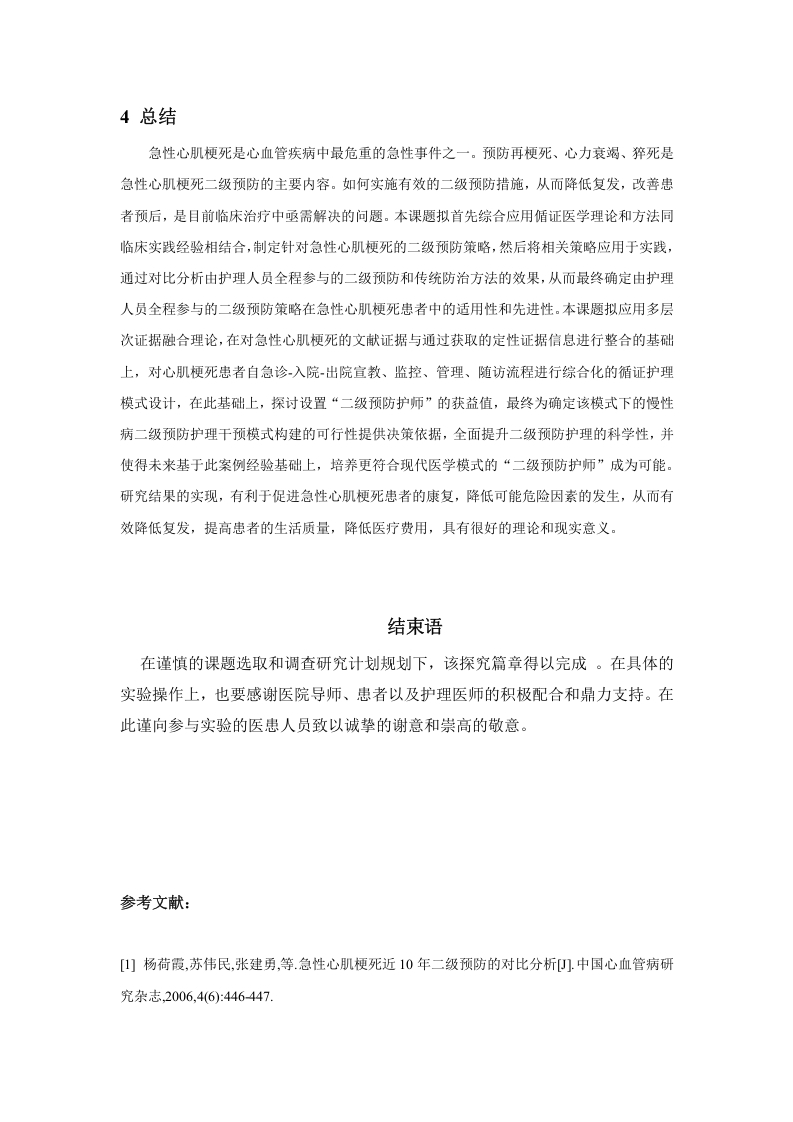
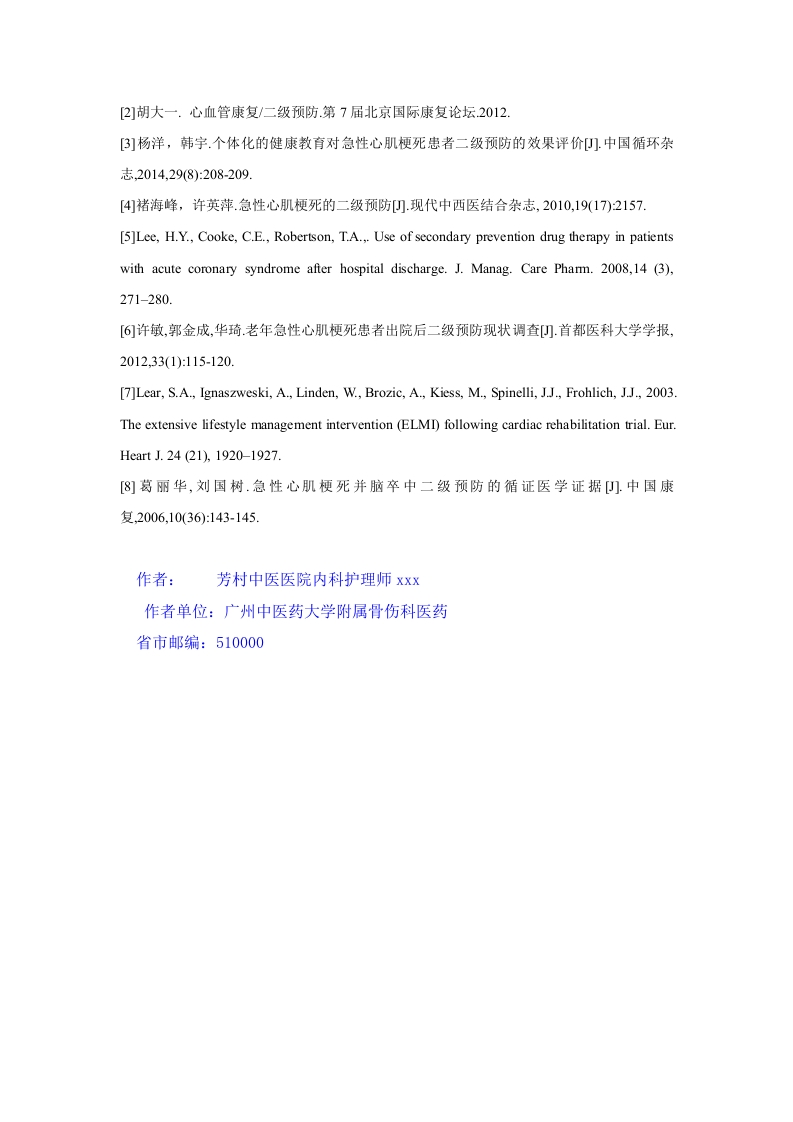








暂无评论内容